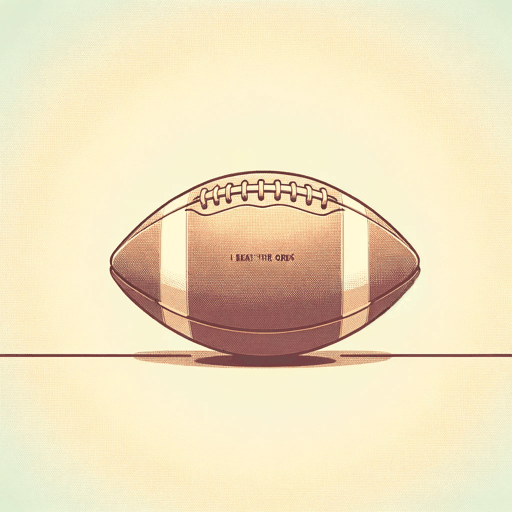71 pages • 2 hours read
Michael OherI Beat the Odds: From Homelessness, to The Blind Side, and Beyond
Nonfiction | Autobiography / Memoir | Adult | Published in 2011A modern alternative to SparkNotes and CliffsNotes, SuperSummary offers high-quality Study Guides with detailed chapter summaries and analysis of major themes, characters, and more. For select classroom titles, we also provide Teaching Guides with discussion and quiz questions to prompt student engagement.
Summary and Study Guide
Overview
I Beat the Odds: From Homelessness, to The Blind Side, and Beyond (2011) is a memoir written by NFL player Michael Oher and journalist Don Yaeger. It tells Oher’s story in his own words, describing his childhood and teen years up to his rookie season in the NFL. His story was first brought to the public’s attention in Michael Lewis’s book The Blind Side: Evolution of a Game, published in 2006. This book was made into a movie, also called The Blind Side, in 2009—which starred Quinton Aaron as Oher and Tim McGraw and Sandra Bullock as Oher’s adoptive parents Sean and Leigh Anne Tuohy.
I Beat the Odds includes themes of personal responsibility and working toward one’s goals, the importance of mentors, and the plight of foster children and at-risk youth. As Oher tells his story, he stresses that the combination of his own drive and finding good mentors was key to his success. More than just a memoir, the book provides research on issues affecting children like a young Oher as well as advice and resources for improving their lives.
This guide is based on the Gotham hardcover edition of the book (2011).
Summary
I Beat the Odds opens with a prologue: Michael Oher drives to an office in Memphis, Tennessee to meet with Bobbie Spivey, the social worker in charge of his family’s case when he was growing up. He does so as research for his book, noting that only as an adult did he realize how much Spivey improved his life. He then flashes back to his childhood. Chapter 1 provides a snapshot of Oher’s happiest memories living in a Memphis housing project called Hurt Village, while Chapter 2 describes his family life in starker terms—frequently moving and trying to cope as his mother experiences substance use with crack cocaine. Chapter 3 explains how Spivey and the Department of Children’s Services intervened to place Oher and his 11 siblings in foster care.
Chapters 4-6 describe Oher’s life in both foster care and hospitalization. He explains how his family life changed for the better under the care of Velma Jones, his first foster mother—and why he continued to run away despite the change. After a series of short-term stays with other foster families, Oher is sent to St. Joseph’s Hospital for counseling to deal with his anger issues (which he claims were misdiagnosed). After two weeks of counseling, he escapes and makes his way back to his mother. In Chapter 7, Oher remains with his mother, as no one from the hospital attempts to retrieve him. In Chapter 8, Oher shares his source of inspiration: His seven-year-old self watched the NBA finals of 1993, absorbed by Michael Jordan’s athleticism, and decided that sports would be his ticket to a better life.
In Chapters 9-12, Oher describes the changes he experienced upon entering high school. He finds a series of mentors, like “Big” Tony Henderson, who help guide him to organized sports and a stable school life. He also starts staying at the homes of different friends, as he knew his mother’s situation would not sustain him. Tony helped Oher get into Briarcrest Christian School, a private high school with a mostly wealthy, white student body. There, he meets the Tuohys, who give him a permanent place to stay and eventually become his family (with Sean and Leigh Anne Tuohy becoming his legal guardians).
Chapters 13-15 follow Oher as he finds success in football and gets recruited by the University of Mississippi. However, throughout high school, he struggles to fill in the gaps of his previously inconsistent education. Tutors like Miss Sue help him learn more effectively and improve his grades. After a stellar college career playing football, he is selected in the NFL draft of 2009. Chapters 16-17 describe his draft and his rookie season with the Baltimore Ravens.
In Chapter 18, Oher explains how he came to know Michael Lewis, the man behind his life story The Blind Side—and how the book and its film adaptation affected his life. Chapters 19-21 address children who face crises like Oher’s younger self—growing up without a stable home life, in need of support and mentorship. Chapter 19 includes fan mail from such children (and the adults who help them), while Chapter 20 offers personal advice on how to escape a harmful family life or environment. Chapter 21 lists some organizations that provide aid and support to vulnerable children, as Oher urges people to get involved and make a difference in these children’s lives.

